How To Use Git Gui Windows
Git has its native environment within the terminal. All the new features are updated first at the control line, and only in that location is the full power of Git. But obviously text isn't the simplest choice for all tasks; sometimes some users are much more than comfy with a point-and-click interface, a visual representation is what they need.
Notation: There'south nothing these graphical clients tin can exercise that the command-line client tin can't; the control-line is even so where you'll accept the virtually ability and control when working with your repositories.
Working with GUI
Git GUI is Tcl/Tk based graphical user interface to Git. It focuses on allowing users to make changes to their repository by making new commits, amending existing ones, creating branches, performing local merges, and fetching/pushing to remote repositories.
The first thing we demand to do is install Git on Windows; you tin can do and then with the post-obit steps:
Step 1: Download and install the latest version of Git for Windows.
Step ii: Use the default options for each stride in the installation.
Pace 3: Remove Git Bash Desktop Icon.
Step 4: Get to Get-go > All Programs > Git > Git GUI and brand a Desktop Shortcut.
Getting started with Git GUI
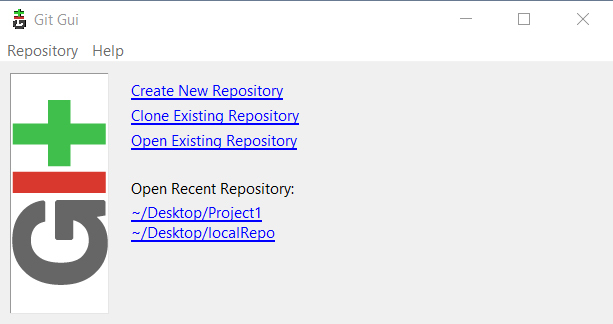
Pace 1: Create Remote Repository
At present, we need a Git repository, and we'll create a new remote repository on Github.
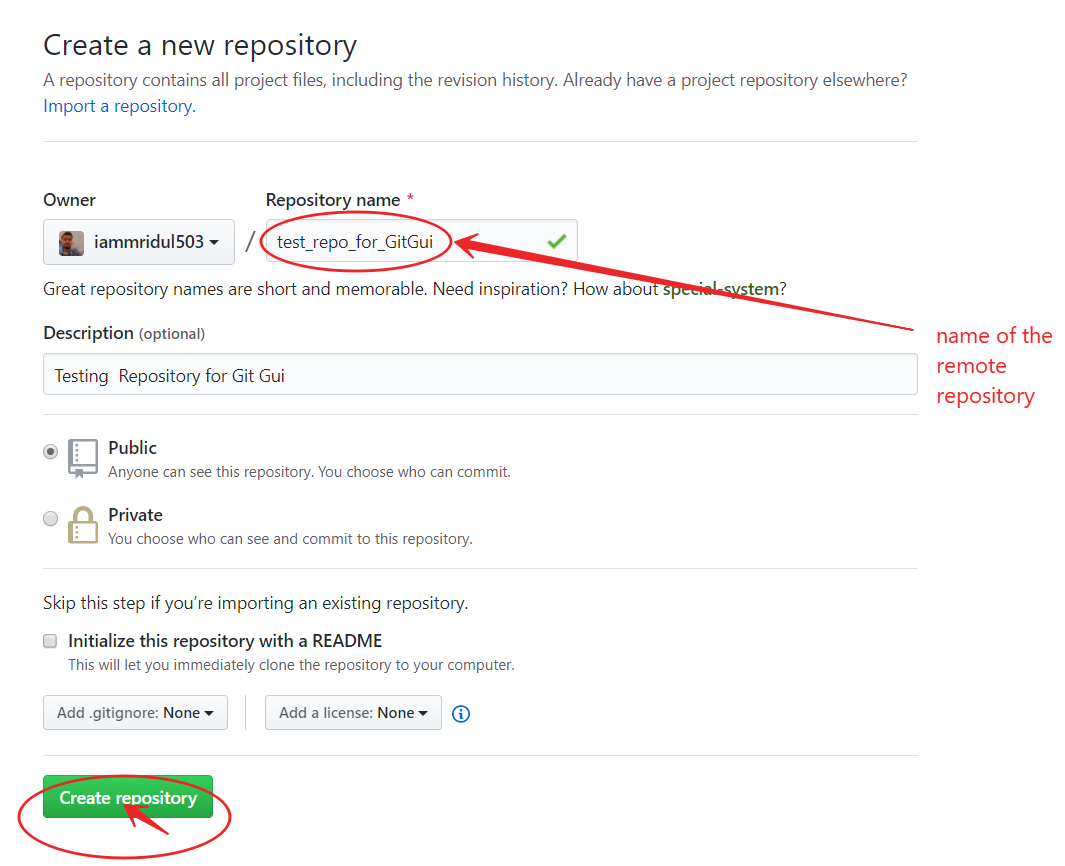
Step two: Create a Local Repository
For creating a local repository: in our Git GUI, click on "Create New Repository".
Select the location you wish to store your repository in. It is of import to note that the selected repository location
MUST Non exist.
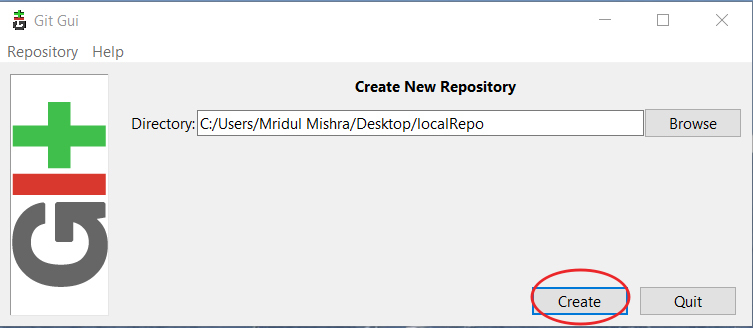
In order for this new repository to be initialized, you lot must first create a file, any file, in your local repo.Then, you must Commit and Push to the remote Git repository location.
Step 3: Clone a Remote Repository to a Local Repository
In club to clone a repository, click on the "Clone Existing Repository" link in the Git GUI window. An existing repository is one that is already initialized and/or has commits pushed to it.
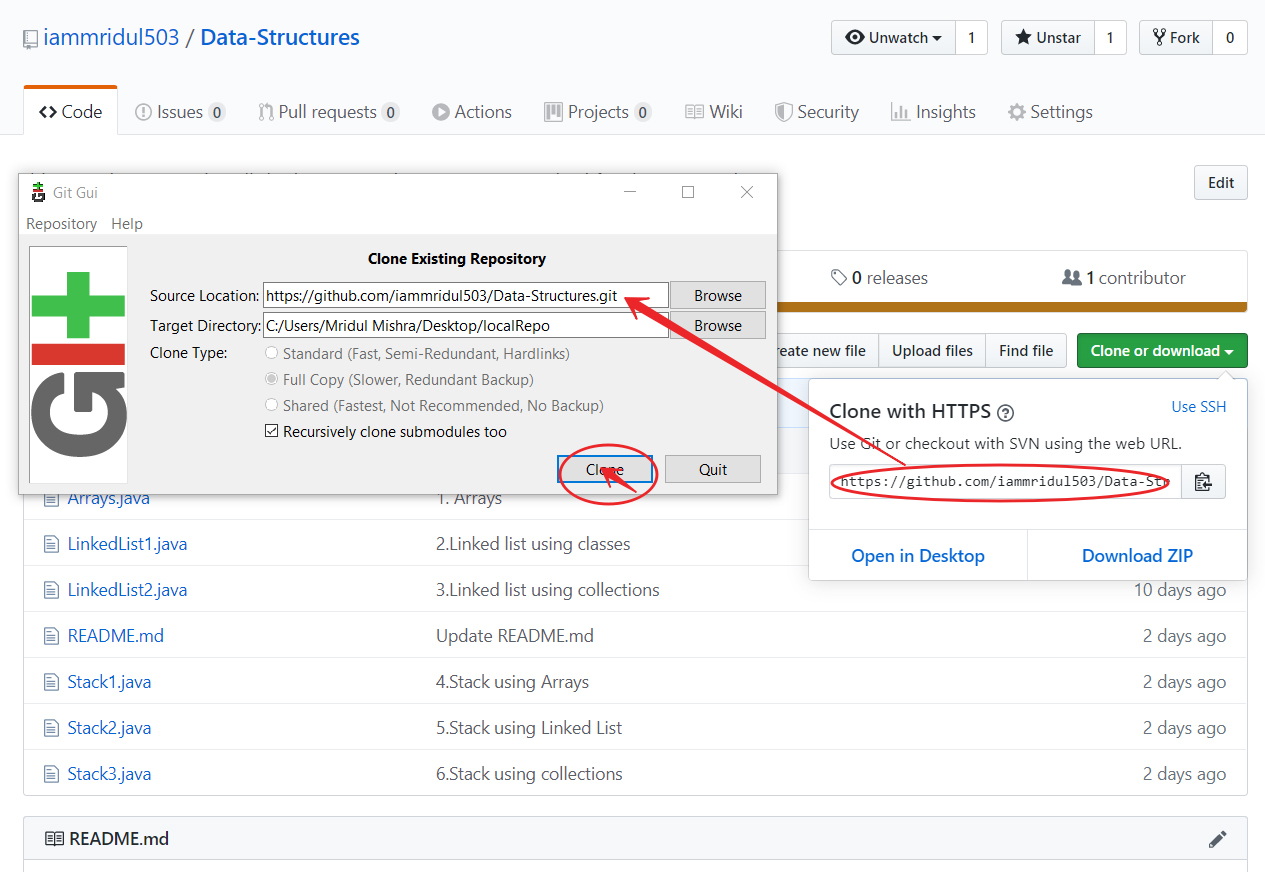
Note: In the Source Location field, fill in the Git remote repository location. The target directory works as aforementioned in the instance of creating a local repository. Git volition endeavor to create it, and information technology volition fail if information technology already exists.
Working with the GUI Client
The Git GUI makes it easier to perform Git-related tasks, such as staging changes, commits, and pushes.
Staged Changes
When nosotros move files to a Git directory, you lot volition run into all the files in the "Unstaged Changes" window. This basically means that new files have been added, removed, updated, etc. When nosotros click the "Phase Changed" button, it will attempt to add all the new files to the Git index.
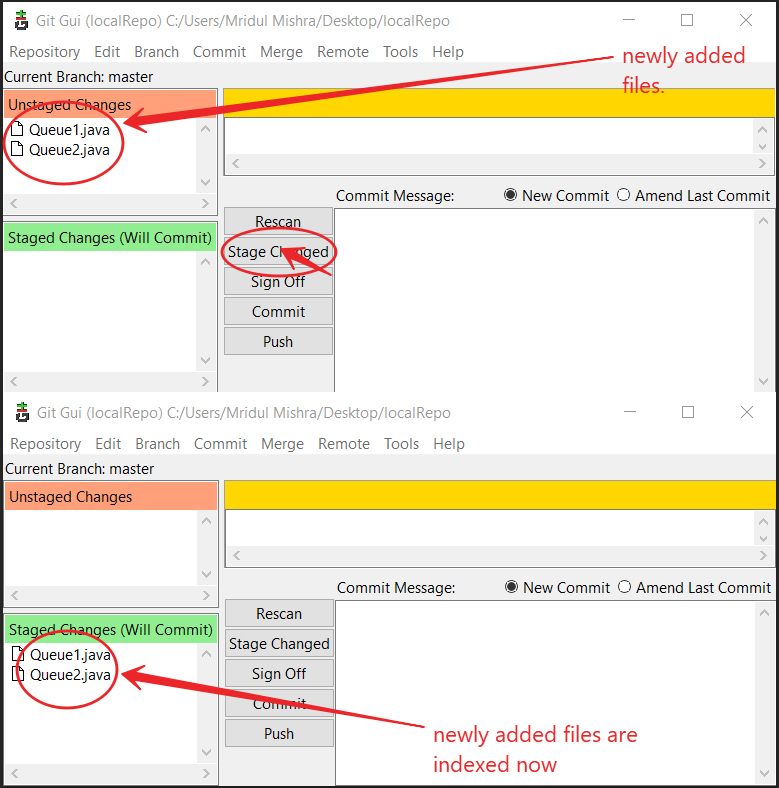
Git Equivalent Command: git add file_name git status
Commits
After nosotros've staged your changes, we need to commit them to your local repository. Type a Commit Message that makes sense to the changes that were made. When we are done, printing the Commit button.
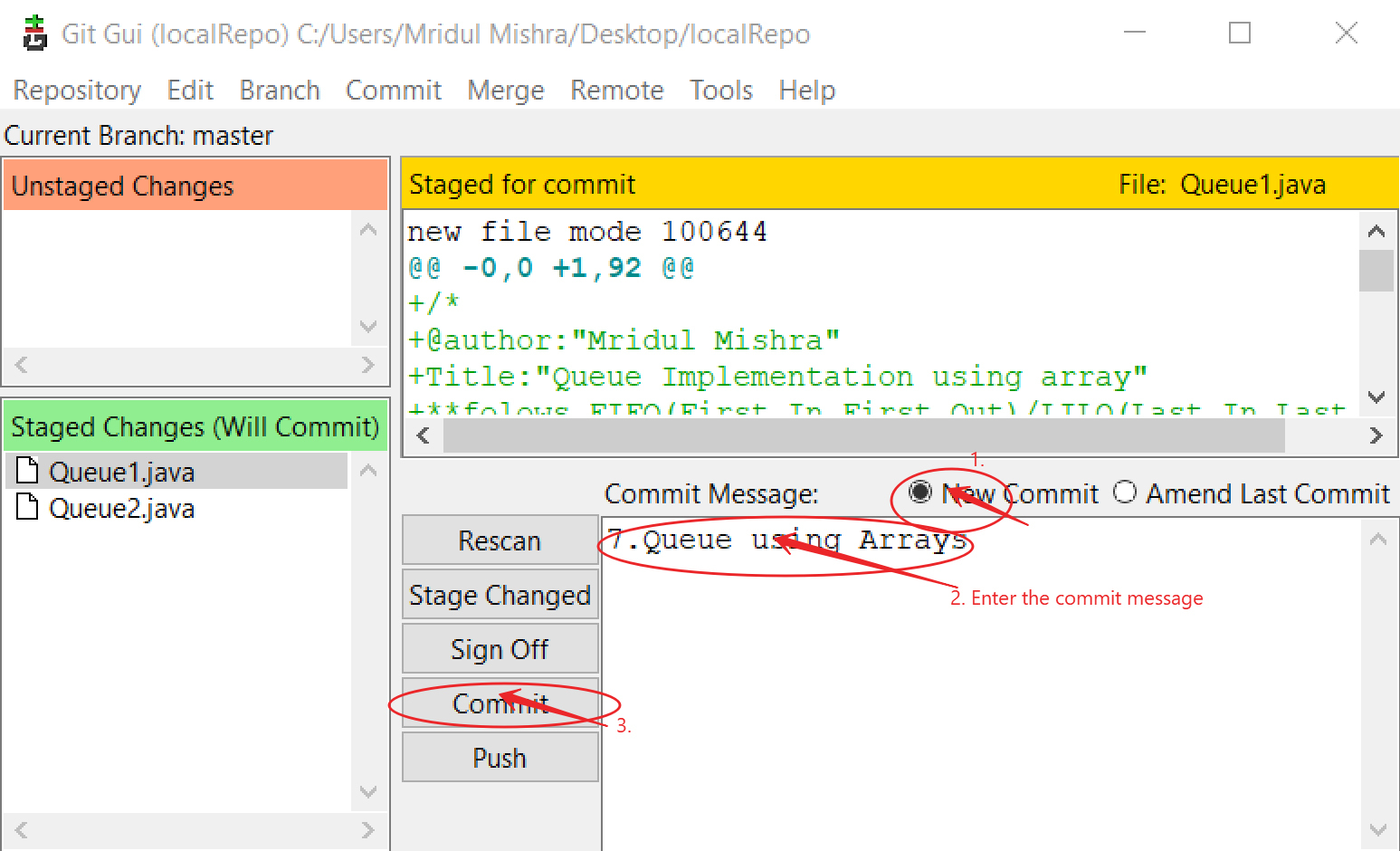
Git Equivalent Control: git commit -m "bulletin"
Pushing
Afterwards we accept committed all the codes in the local repository, we need to push these changes to our remote repository on GitHub. Without pushing the changes, others would not be able to access the code.

Earlier we can keep to push, we need gear up up a location to push button to. Most folks refer to this location equally "origin". In Git, "origin" is a shorthand name for the remote repository that a project was originally cloned from. More precisely, it is used instead of that original repository's URL – and thereby makes referencing much easier.
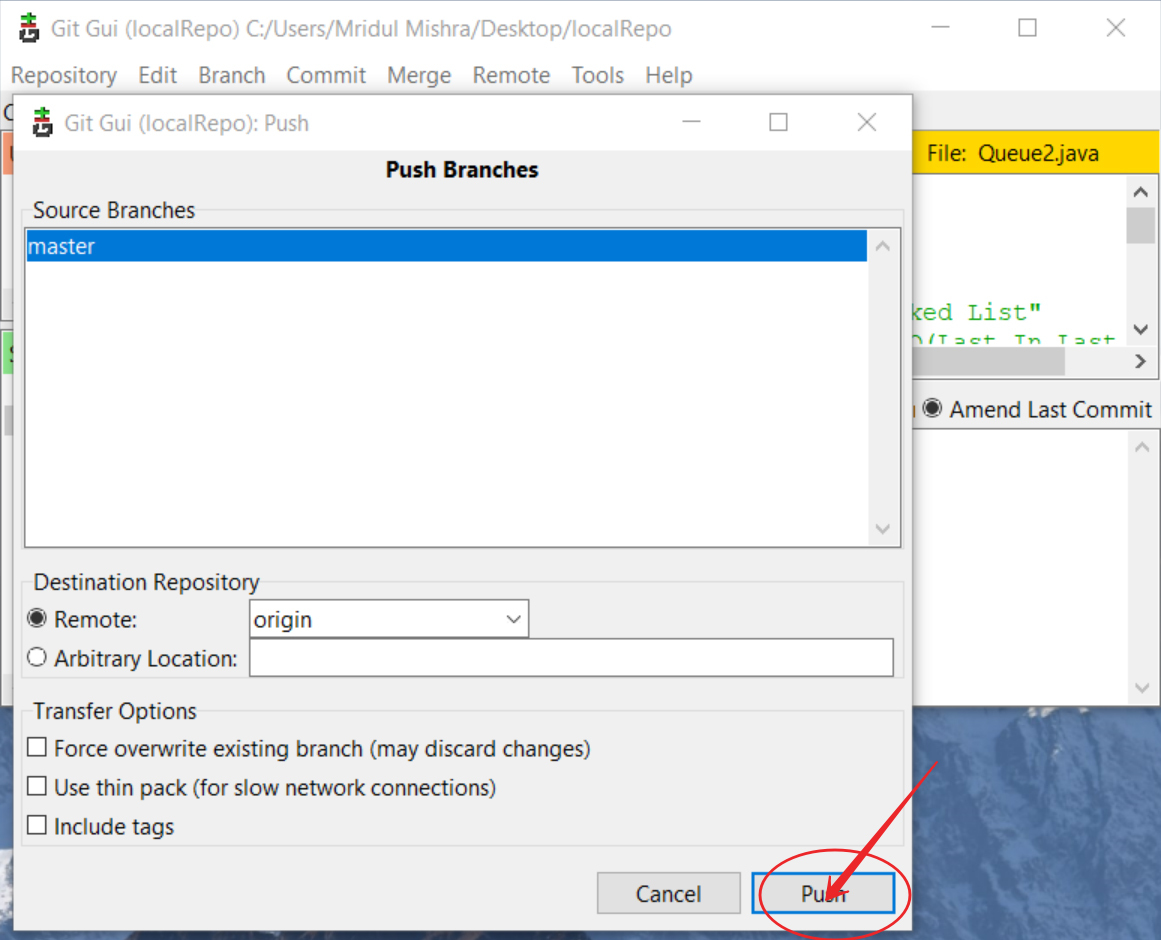
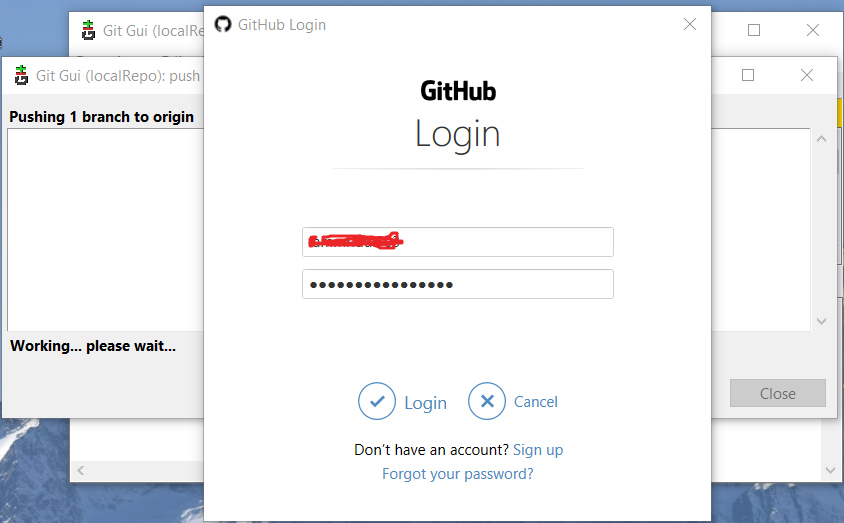
Git Equivalent Command: git push -u origin master
This way GUI makes information technology a lot easier to work with GIT for the users that practise non prefer the command line.
Source: https://www.geeksforgeeks.org/working-on-git-for-gui/
Posted by: rimmerflon1980.blogspot.com

0 Response to "How To Use Git Gui Windows"
Post a Comment